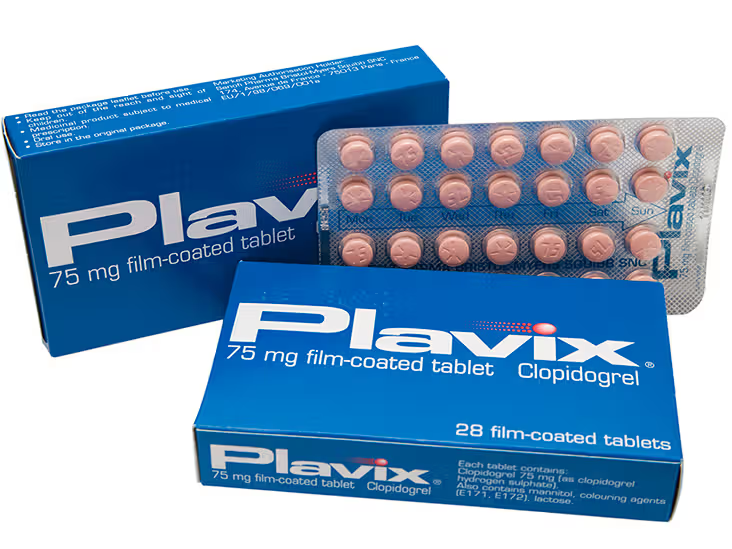Investing in Pharmacogenomics: What Venture Capitalists Need to Know
Pharmacogenomics, the confluence of genomics and personalized medicine, is reshaping healthcare, promising to transform treatment by aligning therapies with an individual’s genetic makeup1. Despite its potential, the field’s development has been uneven, with high-income countries (HICs) outpacing low- and middle-income countries (LMICs) in research productivity by a factor of 2.91. For venture capitalists, grasping the nuances and challenges of pharmacogenomics is imperative when considering investments in this dynamic sector.
1 China, India, and Brazil are at the forefront of pharmacogenetics and pharmacogenomics research in LMICs, yet their research and development budgets, as a percentage of GDP, lag behind those of HICs1. This funding gap hampers research productivity in LMICs, compounded by the lack of standardized genetic testing and limited bioinformatics capabilities1. Furthermore, the establishment of biobanks, vital for pharmacogenomics research, is more prevalent in HICs, while LMICs face sustainability challenges due to financial constraints1.

2 With the U.S. government anticipated to cover nearly half of medical expenses by 2014, and healthcare spending projected to outpace the nation’s GDP, reaching 18.7% in 2014, the imperative for cost-effective, personalized treatments intensifies2. Venture capitalists must vigilantly observe the pharmacogenomics landscape, encompassing regulatory frameworks and market trends, to pinpoint investment opportunities that can influence the trajectory of personalized medicine.
Understanding the Fundamentals of Pharmacogenomics
Pharmacogenetics, the study of how genetic variations influence individual drug responses and adverse drug reactions, has a rich history spanning over 50 years3. Early studies on genetic variations affecting drug response were first reported in the 1950s and 1960s, providing insights into the complex interplay between genes and drug metabolism3. One example is the genetic variation in the enzyme butyrylcholinesterase (BCHE), which can impact succinylcholine metabolism, leading to prolonged paralysis in individuals with the atypical BCHE allele3.
The Role of DNA in Drug Response
DNA, present in nearly every human cell, carries the genetic information that codes for amino acids and proteins, including those involved in drug metabolism3. Pharmacogenomics has evolved from a focus on monogenic traits to a more comprehensive understanding of polygenic traits, incorporating pharmacokinetic (PK) and pharmacodynamic (PD) factors3. This transition has enabled genome-wide studies in drug response variation, providing a deeper insight into the complex mechanisms underlying individual drug responses3.
Evolution from Traditional Medicine to Precision Prescribing
Pharmacogenetics has evolved from the traditional one-size-fits-all approach to precision medicine, where individual genetic profiles are considered for more effective and safer drug prescribing3. Guidelines have been developed by various committees, such as the Clinical Pharmacogenetics Implementation Consortium (CPIC) and the Dutch Pharmacogenetics Working Group (DPWG), to translate genotype data into actionable clinical information3. This transition has led to a better understanding of how genetic factors can influence drug response, paving the way for more personalized treatment approaches3.
Key Genetic Biomarkers and Their Significance
Pharmacogenomics has identified key genetic biomarkers that play a crucial role in drug response4. For example, certain individuals with a rare polymorphism of the CYP2D6 enzyme experienced neural and liver toxicity when treated with the drug perhexiline in the 1980s4. Similarly, warfarin and clopidogrel have different therapeutic doses based on an individual’s genetic makeup, showcasing the influence of genetics on drug dosages4. Understanding these genetic biomarkers is essential for precision prescribing and optimizing therapeutic outcomes4.
The transition from traditional pharmacogenetics to the broader field of pharmacogenomics has enabled a more comprehensive understanding of the complex interactions between genetics, drug response, and clinical outcomes34. By integrating transcriptomics and metabolomics data, modern pharmacogenomics aims to take a systems-based approach to personalized medicine, offering the potential for more targeted and effective drug therapies3.
| Key Highlights | Significance |
|---|---|
| Pharmacogenetics has a history spanning over 50 years | Demonstrates the long-standing importance and evolution of this field |
| Genetic variations can impact drug metabolism and response | Highlights the need for personalized prescribing based on individual genetic profiles |
| Pharmacogenomics incorporates pharmacokinetic and pharmacodynamic factors | Provides a more comprehensive understanding of the complex mechanisms underlying drug response |
| Guidelines have been developed to translate genotype data into clinical information | Facilitates the implementation of pharmacogenomics in clinical practice |
| Genetic biomarkers can significantly influence drug dosage and response | Emphasizes the importance of considering genetic factors for precision prescribing |
Pharmacogenomics holds great promise in advancing personalized medicine, enabling more effective and safer drug therapies by leveraging an individual’s genetic profile45. As the field continues to evolve, the integration of various omics data and a systems-based approach will further enhance our understanding of the complex interplay between genetics and drug response3.
“Pharmacogenomics is the keystone of precision medicine, providing the ability to tailor drug therapies to an individual’s unique genetic profile.”
The transition from traditional pharmacogenetics to the broader field of pharmacogenomics has enabled a more comprehensive understanding of the complex interactions between genetics, drug response, and clinical outcomes34. By integrating transcriptomics and metabolomics data, modern pharmacogenomics aims to take a systems-based approach to personalized medicine, offering the potential for more targeted and effective drug therapies3.
Current Market Landscape and Growth Potential
The pharmacogenomics market is witnessing a remarkable surge, with projections indicating a significant expansion. The global Pharmacogenomics market size is anticipated to exceed USD 40.6 Billion by 2033, with a compound annual growth rate (CAGR) of 10.9% from 2024 to 20336. This growth is largely attributed to the increasing adoption of personalized medicine and the rising incidence of chronic diseases, notably cancer. The latter has seen a notable increase in research funding in the United States, from USD 6.72 billion in 2022 to USD 7.10 billion in 20237.
The North American region holds a substantial 37.6% of the pharmacogenomics market share6. Conversely, the Asia Pacific is identified as the fastest-growing market, driven by advancements in healthcare infrastructure and a growing emphasis on personalized medicine7. Industry leaders such as Thermo Fisher Scientific Inc., Abbott Laboratories Inc., F. Hoffmann-La Roche AG, Bio-Rad Laboratories, and Biomerieux SA are at the forefront of this evolving market7.
The pharmacogenomics market is undergoing a technological shift, with polymerase chain reaction (PCR) becoming the dominant segment, accounting for 36.2% of the market share6. This reflects the increasing significance of genetic testing and analysis in personalized medicine. Additionally, the oncology application segment holds the largest market share at 29.1%, driven by the global cancer incidence and the demand for targeted therapies6.
As the healthcare industry evolves, pharmacogenomics is set to play a crucial role in shaping personalized medicine’s future. With projected growth and advancements in genetic profiling, this market offers substantial opportunities for investors and industry players alike76.
Investing in Pharmacogenomics: Key Investment Criteria
As venture capitalists delve into the rapidly evolving realm of pharmacogenomics, they must scrutinize several critical investment criteria. The evaluation of the underlying technology stands paramount, necessitating an assessment of its accuracy, efficiency, and scalability. This is essential for pharmacogenomic testing platforms8.
Technology Assessment Factors
The completion of the human genome sequence, achieved four years ahead of schedule, marks a significant milestone. It has paved the way for further advancements in pharmacogenomics8. The development of comprehensive SNP maps by initiatives like The SNP Consortium has provided invaluable genetic markers for both scientific research and clinical applications8. Leading biotech firms have driven genotyping throughput to millions per day, significantly enhancing the scalability and accessibility of pharmacogenomic testing8.
Market Size and Scalability Potential
The global pharmacogenomics market is forecasted to expand from $3.5 billion in 2023 to $5.8 billion by 2028, with a Compound Annual Growth Rate (CAGR) of 10.6%9. The increasing prevalence of chronic and genetic diseases, such as the estimated 20 million new cancer cases and 10 million cancer-related deaths globally in 2020, fuels the market’s growth potential9. Variabilities in drug responses, stemming from genetic elements, metabolism variations, and ethnic differences, also present opportunities for personalized medicine solutions9.
Regulatory Compliance Requirements
Navigating the regulatory landscape is a critical consideration for investors in pharmacogenomics. Compliance requirements can vary significantly across different regions, necessitating a thorough assessment of their impact on commercial viability10. The slow application of pharmacogenomics knowledge and principles in clinical practice underscores the need for the development of PGx-driven clinical practice guidelines. These guidelines are essential for improving the precision, accuracy, and relevance of treatment recommendations10.
By meticulously evaluating these key investment criteria, venture capitalists can identify promising pharmacogenomics opportunities. These opportunities must align with their strategic objectives and offer the potential for long-term sustainable growth9.
Challenges and Barriers to Market Entry
The pharmacogenomics industry confronts formidable challenges and barriers to market entry. A primary obstacle is the necessity for substantial clinical evidence to validate drug-diagnostic associations11. The market is anticipated to expand from $8.3 billion in 2022 to $30.2 billion by 2030, with a CAGR of 17.7% from 2024 to 203011. However, this growth hinges on surmounting these impediments.
Complex technology requirements pose another significant challenge for pharmacogenomics testing12. The industry has embraced next-generation sequencing (NGS) technologies, with 79% of I-PWG member companies utilizing them for internal PGx studies12. Nonetheless, the efficient deployment of these technologies, coupled with robust bioinformatics infrastructure, remains a formidable hurdle.
Regulatory hurdles also act as a significant barrier to market entry12. Laws such as China’s Regulation of Human Genetic Resources and Biosecurity Law, alongside similar legislation in Brazil, Italy, Spain, Denmark, and Portugal, have heightened requirements for biospecimen collection and storage12. Navigating this intricate regulatory landscape is imperative for companies aiming to enter the pharmacogenomics market.
In low- and middle-income countries (LMICs), additional barriers include limited research funding, absence of established biobanks, and insufficient IT resources13. Overcoming these challenges is vital for ensuring equitable access to pharmacogenomics-based precision medicine globally.
Despite these challenges, the potential benefits of pharmacogenomics are substantial, including enhanced drug efficacy, reduced adverse drug reactions, and the possibility of more personalized and targeted treatments13. Addressing market entry barriers through collaborative efforts, strategic investments, and policy changes will be crucial for realizing the full potential of this transformative field.
Commercial Viability and Revenue Models
The commercial viability of pharmacogenomics often hinges on successful partnerships between diagnostic and pharmaceutical companies14. Pricing strategies must strike a careful balance, factoring in the cost of genetic testing with the potential savings from more effective treatments14. Reimbursement pathways vary significantly across countries and healthcare systems, with some markets more receptive to value-based pricing models14. Innovative opportunities exist for startups, pharmaceutical firms, and healthcare providers to collaborate and integrate pharmacogenomic testing into routine clinical practice14.
Pricing Strategies
The pharmaceutical industry has traditionally relied on a “one drug fits all” approach, targeting therapies to broad populations for maximum benefit15. Blockbuster medicines with annual sales over $1 billion are crucial for pharmaceutical company profitability and market leadership15. However, pharmacogenetics challenges this blockbuster model by requiring a more fragmented market approach tailored to individual genetic responses to drugs15. The cost-effectiveness ratio (ICER) is a crucial factor in determining the economic value of pharmacogenetics and new therapies15.
Reimbursement Pathways
Reimbursement for pharmacogenomic tests and treatments varies widely across healthcare systems and countries14. While some markets are more receptive to value-based pricing models, others may be slower to adopt these innovative approaches14. Navigating the complexities of reimbursement policies is a key consideration for companies seeking to commercialize pharmacogenomic solutions14.
Partnership Opportunities
Collaborations between industries and clinical settings are crucial for integrating pharmacogenomics into routine patient care14. Partnerships between startups, pharmaceutical firms, and healthcare providers can help drive the adoption of pharmacogenomic testing and personalized treatment plans14. These collaborative efforts can unlock new revenue streams and accelerate the commercial viability of pharmacogenomics14.
“Pharmacogenetics challenges the blockbuster model by requiring a more fragmented market approach tailored to individual genetic responses to drugs.”
Technology Infrastructure Requirements
Effective genomic testing programs necessitate a sophisticated technology framework. This encompasses advanced genotyping techniques, meticulously organized databases, and a steadfast bioinformatics infrastructure16. The role of electronic health records (EHRs) in storing and retrieving genetic data across healthcare settings is paramount. It facilitates seamless patient care and data exchange16.
In low- and middle-income countries (LMICs), the scarcity of information technology hinders the adoption of pharmacogenomics17. Biobanks, though well-established in affluent nations, are still in the nascent stages in LMICs. They are pivotal in advancing pharmacogenomic research and its practical applications17.
The advent of pharmacogenomic-based APIs, leveraging the FHIR specification, is propelling the integration of pharmacogenomics into clinical practices16. Clinical decision support systems are essential for translating intricate pharmacogenomic data into actionable insights for healthcare professionals. This is crucial for enhancing test interpretation and guiding the selection of personalized medications16.
Integrating pharmacogenomics intelligence into existing IT systems, via web-based portals or EHR systems, is vital for regulatory compliance16. Laboratories should prioritize gene-drug pairs with significant clinical relevance to their patient demographics. This approach maximizes the utility and return on investment in pharmacogenomic testing16.
| Gene | Locus Size (bp) | Rare Variants | Related Drugs |
|---|---|---|---|
| CYP2C19 | 90,525 | 712 | 15 |
| DPYD | 917,258 | 1211 | 2 |
| SLCO1B1 | 108,045 | 951 | 2 |
Clinical practice guidelines, issued by entities like the Clinical Pharmacogenetics Implementation Consortium (CPIC), are indispensable for selecting gene-drug pairs. These guidelines consider factors such as FDA labeling, reimbursement, and clinical trial evidence16. Health organizations implementing pharmacogenomics services often create informative websites. These resources provide physicians and patients with pathways to relevant literature, videos, and FAQs16.
The field of pharmacogenomics (PGx) is evolving towards precision medicine, enabling customized treatments for enhanced patient care17. PGx has become essential in specialties like oncology, psychiatry, gastroenterology, and cardiology. In these fields, physicians are increasingly adept at PGx testing and implementation17.
Collaboration between laboratories with experience in PGx testing and those seeking to establish their programs is crucial. Such partnerships facilitate the sharing of expertise, experiences, and strategies for overcoming technology adoption challenges17.
“The development and use of pharmacogenomic-based APIs using the FHIR specification are accelerating the integration of pharmacogenomics into clinical workflows.”16
Clinical Implementation and Healthcare Integration
The successful integration of pharmacogenomics into clinical settings necessitates a seamless alignment with existing healthcare infrastructures18. This entails the adoption of standardized genetic testing protocols within hospital systems, coupled with the education of physicians in the interpretation and application of complex genetic data. Furthermore, it is imperative to ensure patient acceptance of personalized treatment plans18.
Hospital System Adoption
The integration of pharmacogenomics into hospital workflows poses several challenges. These include the necessity for standardized testing methods, the interpretation of genetic information, and the overcoming of potential resistance to changes in prescribing practices18. Model practices have demonstrated the feasibility of developing pharmacogenomic Clinical Decision Support (CDS) within commercially available Electronic Health Records (EHRs). However, EHR vendor support for these capabilities is still emerging and limited, necessitating substantial local institutional effort19.
Physician Education and Training
Gaps in pharmacogenomics knowledge and education among healthcare providers underscore the need for ongoing training and education in medical and pharmacy school curricula18. Clinicians must be equipped to interpret genetic test results and apply this information to inform personalized drug selection and dosing19.
Patient Acceptance Factors
Patient education and acceptance are paramount for the successful implementation of pharmacogenomics-guided treatments18. Overcoming potential resistance to changes in prescribing practices and ensuring patient adherence to personalized treatment plans are essential for realizing the full benefits of this precision medicine approach18.
| Key Considerations for Clinical Implementation | Challenges | Opportunities |
|---|---|---|
| Hospital system adoption |
|
|
| Physician education and training |
|
|
| Patient acceptance factors |
|
|
“Successful clinical implementation of pharmacogenomics requires a multifaceted approach, addressing challenges in hospital system adoption, physician education, and patient acceptance factors.”
Competitive Analysis of Major Players
The pharmacogenomics market is a dynamic and rapidly evolving landscape, with both established pharmaceutical companies and innovative startups shaping the industry. Major players like Roche have demonstrated commercial potential in oncology with drugs like20, while startups such as Prairie Health, NalaGenetics, Dalcor Pharmaceuticals, Phenomics Health, and Fagron Genomics are developing novel approaches to pharmacogenomic testing and application20.
These companies are focused on various aspects of pharmacogenomics, from psychiatric medications to cardiovascular treatments and preventive medicine. The global pharmacogenomics market is driven by factors such as an aging population, increased patient awareness of personalized therapy, and a rise in chronic diseases like tuberculosis, lung cancer, and HIV20.
Pharmacogenomics has been shown to increase patient survival and lower the wasteful expense of treating non-responsive individuals20. The market’s growth is further enhanced by advancements in genomic technologies, drug development, clinical trials, government support, direct-to-consumer genetic testing, and strategic collaborations, such as the partnership between Pillar Biosciences Inc. and Illumina Inc. to provide a global range of oncology assays using next-generation sequencing20.
Personalized medicine, driven by pharmacogenomics, leads to improved treatment effectiveness, lower adverse drug reactions, the development of innovative remedies, increased patient involvement in healthcare decisions, and cost savings in the long run20. In 2023, the NHS initiated a pilot study to provide pharmacogenomic testing for patients using specific medications like statins, antidepressants, and proton pump inhibitors20.
The competitive landscape of the pharmacogenomics market is diverse, with established players and innovative startups vying for market share. By understanding the key players and their strategic initiatives, investors can identify opportunities and assess the overall potential of this rapidly evolving industry.
Research and Development Investment Considerations
Investing in pharmacogenomics research and development (R&D) necessitates a meticulous examination of distinct clinical trial requisites. Pharmacogenomics21 delves into the realm where an individual’s genetic predisposition modulates their reaction to particular medications. This opens avenues for more precise and individualized therapeutic strategies21.
Clinical Trial Requirements
Pharmacogenomic research often diverges from the conventional randomized controlled trials. The necessity to scrutinize small patient cohorts with precise genetic markers necessitates the adoption of observational studies and adaptive trial designs. These methodologies are pivotal in assessing the influence of genetic determinants on drug efficacy and safety21.
Development Timeline Expectations
Pharmacogenomic drug development timelines are typically longer than those of traditional drugs. Investors must not only prove the efficacy of the drug but also validate the associated genetic tests. The integration of genetic tests into the drug development process, facilitated by pharmacogenomic research, extends the development period21.
Investors in pharmacogenomics must anticipate extended development cycles and the intricate challenges of the clinical trial environment. The advent of AI-driven pharmacogenomic research has revolutionized data analysis. It provides insights for precise drug response prediction, tailored treatment plans, and enhanced patient outcomes21.
“Pharmacogenomic testing advancements have been instrumental in guiding dosage adjustments for various medications, such as aripiprazole, based on genetic profiles.”21

The pharmacogenomics market is experiencing rapid growth, driven by the escalating demand for personalized medicine and the recognition of genetic influences on drug efficacy21. Investors must navigate the unique challenges and opportunities presented by this evolving field22.
Global Market Opportunities and Regional Differences
The pharmacogenomics market globally offers varied prospects across different regions. High-income nations, especially the United States, are at the forefront in research and application of pharmacogenomics23. Conversely, emerging markets in Asia, notably China and India, exhibit considerable growth potential23. The disparities in healthcare infrastructures, regulatory frameworks, and genetic diversity among populations significantly influence market opportunities23.
The pharmacogenomics market size globally was estimated at USD 5.8 billion in 2022, projected to reach USD 12.3 billion by 2031, with an anticipated CAGR of 8.52%23. The United States dominates the market, while the Asia-Pacific region is witnessing rapid expansion23.
Genotyping services are a significant segment within the global pharmacogenomics industry. Essential technologies include Next-Generation Sequencing (NGS), Polymerase Chain Reaction (PCR), Mass Spectrometry, and Microarray technology for pharmacogenomic testing and analysis23.
| Region | Market Size (2022) | Market Growth (CAGR 2023-2030) |
|---|---|---|
| North America | USD 2.3 billion | 7.9% |
| Europe | USD 1.8 billion | 8.2% |
| Asia Pacific | USD 1.5 billion | 10.4% |
| Rest of the World | USD 0.6 billion | 7.6% |
High-income countries are pioneers in pharmacogenomics, yet low- and middle-income countries (LMICs) face unique hurdles but also offer opportunities for cost-effective pharmacogenomic implementations23. The global pharmacogenomics technology market was valued at USD 6.2 billion in 2022 and is forecasted to expand at a CAGR of 8.7% from 2023 to 203024.
“The global pharmacogenomics market presents both challenges and opportunities for investors and healthcare providers. Understanding regional differences and growth potential is crucial for strategic decision-making.”
Risk Assessment and Mitigation Strategies
Investing in pharmacogenomics entails risks such as scientific uncertainty, regulatory hurdles, and market adoption barriers25. Risk Evaluation and Mitigation Strategies (REMS) introduce legally binding commitments, encompassing specific requirements, timelines for assessment, and penalties for non-compliance25. The failure to adequately execute REMS elements can precipitate retroactive compliance, a task often deemed impossible, highlighting the critical need for early and effective implementation25.
Strategies to mitigate these risks include diversifying investments across various therapeutic areas, collaborating with established pharmaceutical entities, and focusing on areas with clearer regulatory pathways25. Companies that adeptly implement organizational and medical/safety governance models, anticipating risk-management requirements, may achieve these objectives without substantial changes to their operating models25. Investors must also be vigilant regarding the potential for swift technological advancements, which could render current approaches obsolete.
Continuous vigilance regarding scientific advancements, regulatory shifts, and market trends is imperative for risk management in this evolving field25. The risk-management roadmap delineates five pivotal stages: shaping the benefit/risk profile and drug development decisions, articulating risk-management plans in regulatory submissions, implementing risk-management plans and strategies, monitoring and assessing risk management, and conducting portfolio assessments25. The maintenance of a positive ‘benefit/risk’ profile is paramount in drug development, necessitating proof that benefits outweigh potential safety risks in the target population25. Recent regulatory actions, such as REMS requirements, aim to systematically evaluate the benefit/risk balance to ensure a positive profile and implement strategies to maintain it25.
Source Links
- One Step Ahead in Realizing Pharmacogenetics in Low- and Middle-Income Countries: What Should We Do? – https://pmc.ncbi.nlm.nih.gov/articles/PMC11512769/
- Pharmacogenomics: Answer to Biotech’s Problems? – https://pmc.ncbi.nlm.nih.gov/articles/PMC3564343/
- Pharmacogenomics: a systems approach – PMC – https://pmc.ncbi.nlm.nih.gov/articles/PMC3894835/
- Chapter 7: Pharmacogenomics – PMC – https://pmc.ncbi.nlm.nih.gov/articles/PMC3531317/
- Pharmacogenomics: The Vanguard of Precision Medicine – https://www.pharmacytimes.com/view/pharmacogenomics-the-vanguard-of-precision-medicine
- Pharmacogenomics Market Demand to Hit USD 40.6 Billion by 2033 | Globally at 10.9% CAGR – https://www.globenewswire.com/news-release/2024/02/19/2831251/0/en/Pharmacogenomics-Market-Demand-to-Hit-USD-40-6-Billion-by-2033-Globally-at-10-9-CAGR.html
- Pharmacogenomics Market Size | Mordor Intelligence – https://www.mordorintelligence.com/industry-reports/pharmacogenomics-market
- Emerging strategies and applications of pharmacogenomics – https://pmc.ncbi.nlm.nih.gov/articles/PMC3500198/
- Pharmacogenomics Market Growth, Drivers, and Opportunities – https://www.marketsandmarkets.com/Market-Reports/pharmacogenomics-market-142682251.html
- Pharmacogenomics in early-phase clinical development – https://pmc.ncbi.nlm.nih.gov/articles/PMC4551460/
- Pharmacogenomics Services Market Size, Trends, key challenges and Solutions 2024-2031 – https://www.linkedin.com/pulse/pharmacogenomics-services-market-size-trends-jsdie/
- Current challenges and opportunities for pharmacogenomics: perspective of the Industry Pharmacogenomics Working Group (I-PWG) – https://pmc.ncbi.nlm.nih.gov/articles/PMC9177658/
- Barriers to clinical adoption of pharmacogenomic testing in psychiatry: a critical analysis – Translational Psychiatry – https://www.nature.com/articles/s41398-021-01600-7
- Microsoft Word – False Positive_repagination_gl011106.doc – https://www.york.ac.uk/media/satsu/res-pgx/FalsePositive2006.pdf
- PDF – https://www.oecd-ilibrary.org/business-models-for-pharmacogenetics_5ks72x8lvr37.pdf?itemId=/content/component/9789264076808-6-en&mimeType=pdf
- Implementing a Pharmacogenomics Program – https://clpmag.com/diagnostic-technologies/molecular-diagnostics/implementing-pharmacogenomics-program/
- How Technology Is Driving Adoption of Pharmacogenomics – https://myadlm.org/cln/articles/2023/june/how-technology-is-driving-adoption-of-pharmacogenomics
- Concepts Driving Pharmacogenomics Implementation Into Everyday Healthcare – https://pmc.ncbi.nlm.nih.gov/articles/PMC6826176/
- Integrating pharmacogenomics into electronic health records with clinical decision support – https://pmc.ncbi.nlm.nih.gov/articles/PMC5117634/
- No title found – https://www.marketresearchfuture.com/reports/pharmacogenomics-market/market-analysis
- Advancements in Pharmacogenomic Testing: Implications for Drug Development – https://www.linkedin.com/pulse/advancements-pharmacogenomic-testing-implications-drug-miranda-gbyvc
- Pharmacogenomic technologies: a necessary – https://globalizationandhealth.biomedcentral.com/articles/10.1186/1744-8603-7-30
- Pharmacogenomics Market Size, Share and Forecast to 2031 – https://straitsresearch.com/report/pharmacogenomics-market
- Pharmacogenomics Technology Market Size Report, 2030 – https://www.grandviewresearch.com/industry-analysis/pharmacogenomics-technology-market
- Roadmap to risk evaluation and mitigation strategies (REMS) success – https://pmc.ncbi.nlm.nih.gov/articles/PMC4110798/






